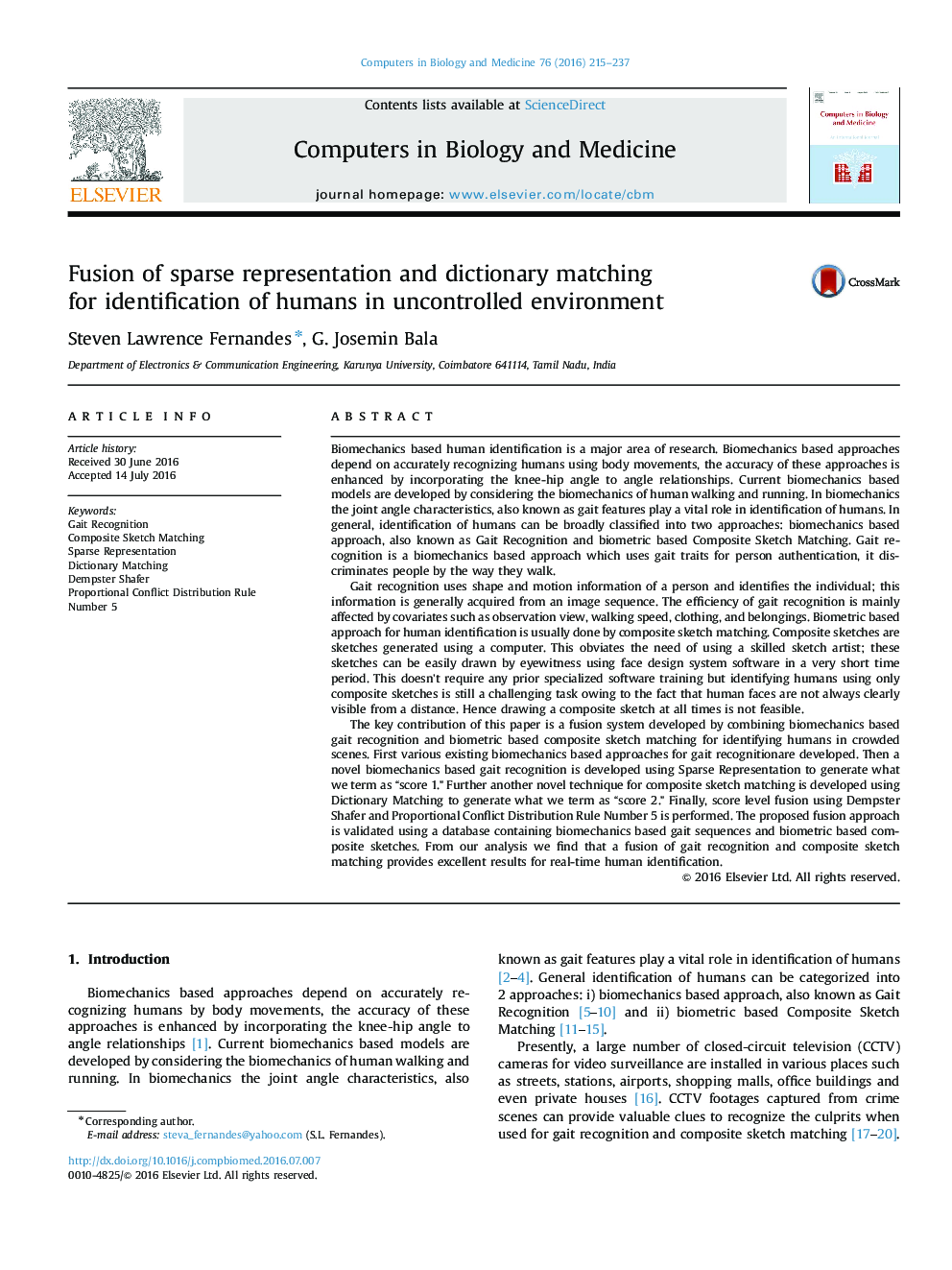| کد مقاله | کد نشریه | سال انتشار | مقاله انگلیسی | نسخه تمام متن |
|---|---|---|---|---|
| 504781 | 864429 | 2016 | 23 صفحه PDF | دانلود رایگان |
• Six existing state of the art gait recognition techniques are validated on various standard publically available gait databases and their deficiencies are found.
• A novel biomechanics based gait recognition using Sparse Representation is developed and score 1 is generated.
• A novel biometric based composite sketch matching is developed using Dictionary Matching and score 2 is generated.
• Finally a novel approach for score level fusion is performed by considering score 1 and score 2 using Dempster Shafer and Proportional Conflict Distribution Rule Number 5.
• To the very best of our knowledge, there doesn’t exist any such fusion approach combining biomechanics based gait recognition and biometric based composite sketch matching. The proposed fusion approach is validated on database containing biomechanics based gait sequences and biometric based composite sketches. From our analysis we find, this fusion approach of gait recognition and composite sketch matching gives excellent results for real-time human identification under uncontrolled environment.
Biomechanics based human identification is a major area of research. Biomechanics based approaches depend on accurately recognizing humans using body movements, the accuracy of these approaches is enhanced by incorporating the knee-hip angle to angle relationships. Current biomechanics based models are developed by considering the biomechanics of human walking and running. In biomechanics the joint angle characteristics, also known as gait features play a vital role in identification of humans. In general, identification of humans can be broadly classified into two approaches: biomechanics based approach, also known as Gait Recognition and biometric based Composite Sketch Matching. Gait recognition is a biomechanics based approach which uses gait traits for person authentication, it discriminates people by the way they walk.Gait recognition uses shape and motion information of a person and identifies the individual; this information is generally acquired from an image sequence. The efficiency of gait recognition is mainly affected by covariates such as observation view, walking speed, clothing, and belongings. Biometric based approach for human identification is usually done by composite sketch matching. Composite sketches are sketches generated using a computer. This obviates the need of using a skilled sketch artist; these sketches can be easily drawn by eyewitness using face design system software in a very short time period. This doesn’t require any prior specialized software training but identifying humans using only composite sketches is still a challenging task owing to the fact that human faces are not always clearly visible from a distance. Hence drawing a composite sketch at all times is not feasible.The key contribution of this paper is a fusion system developed by combining biomechanics based gait recognition and biometric based composite sketch matching for identifying humans in crowded scenes. First various existing biomechanics based approaches for gait recognitionare developed. Then a novel biomechanics based gait recognition is developed using Sparse Representation to generate what we term as “score 1.” Further another novel technique for composite sketch matching is developed using Dictionary Matching to generate what we term as “score 2.” Finally, score level fusion using Dempster Shafer and Proportional Conflict Distribution Rule Number 5 is performed. The proposed fusion approach is validated using a database containing biomechanics based gait sequences and biometric based composite sketches. From our analysis we find that a fusion of gait recognition and composite sketch matching provides excellent results for real-time human identification.
Journal: Computers in Biology and Medicine - Volume 76, 1 September 2016, Pages 215–237
